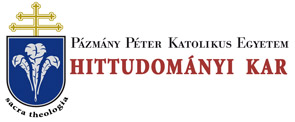Folia Theologica et Canonica 11. 33/25 (2022)
Sacra theologia
106 SZABOLCS ANZELM SZUROMI, OPraern. certain writings of St. Jerome, most of them probably taken by Gratian from the summarium-system of the Panormian textual family. It can be seen that the majority of the newer texts of St. Jerome, compared to the earlier canonical collections are most likely to be included in the Decretum Gratiani without modification. In addition, other short fragments, probably from the florilegium collections, enrich the corpus. Conclusion The patristic sources listed above, and their gradually increasing presence in the most important medieval canon law collections, clearly have, in addition to their ecclesiastical significance, a specific ecclesiastical content. In this process, which is becoming more and more settled, the works of St. Jerome play a prominent role, not only chronologically but also in tenns of content. Along with the use of a large number of theological canons from St. Augustine, which gradually became more and more dominant, the works of St. Jerome, together with the writings of St. Cyprian, constitute the most important ecclesiological pillars of the hierarchical function and sacramental activity of the Church in the canonical collections of the 11th—12th centuries. This, of course, gets a further supplement, especially in the light of the rich doctrinal and ecclesiastical interpretation of Pope St. Leo the Great and Pope St. Gregory the Great. The Decretum Gratiani, as the first canon law collection of the Corpus iuris canonici, with its solid patristic conception, determines not only the content of the contemporary commentaries attached to it, but also the ecclesiological, sacramental and canon-law thoughts that can be found in the later decretal collections. All of these formed a firm basis for the Codex iuris canonici (1917), which was the result of the first codification, and provided a clear interpretative framework for the new Code of Canon Law (CIC [1983])39, as well as for subsequent ecclesiastical legislation. Abstract Before the middle of the 20th century, patristic and canon law studies did not pay sufficient attention to the ecclesiastical influence of the writings of the church fathers on the disciplinary material of the canonical collections of the different periods. A major change in this approach was beginning by the comprehensive work of Professor Charles Munier in 1957. The patristic sources and their gradually increasing presence in the most important medieval canon 39 In detail, cf. Szuromi, Sz. A., Old and New in Harmony: Importance of Former Sources of Canon Law for the Current Church’s discipline, in Verba Theologica 19/2 (2020) 83-97.
